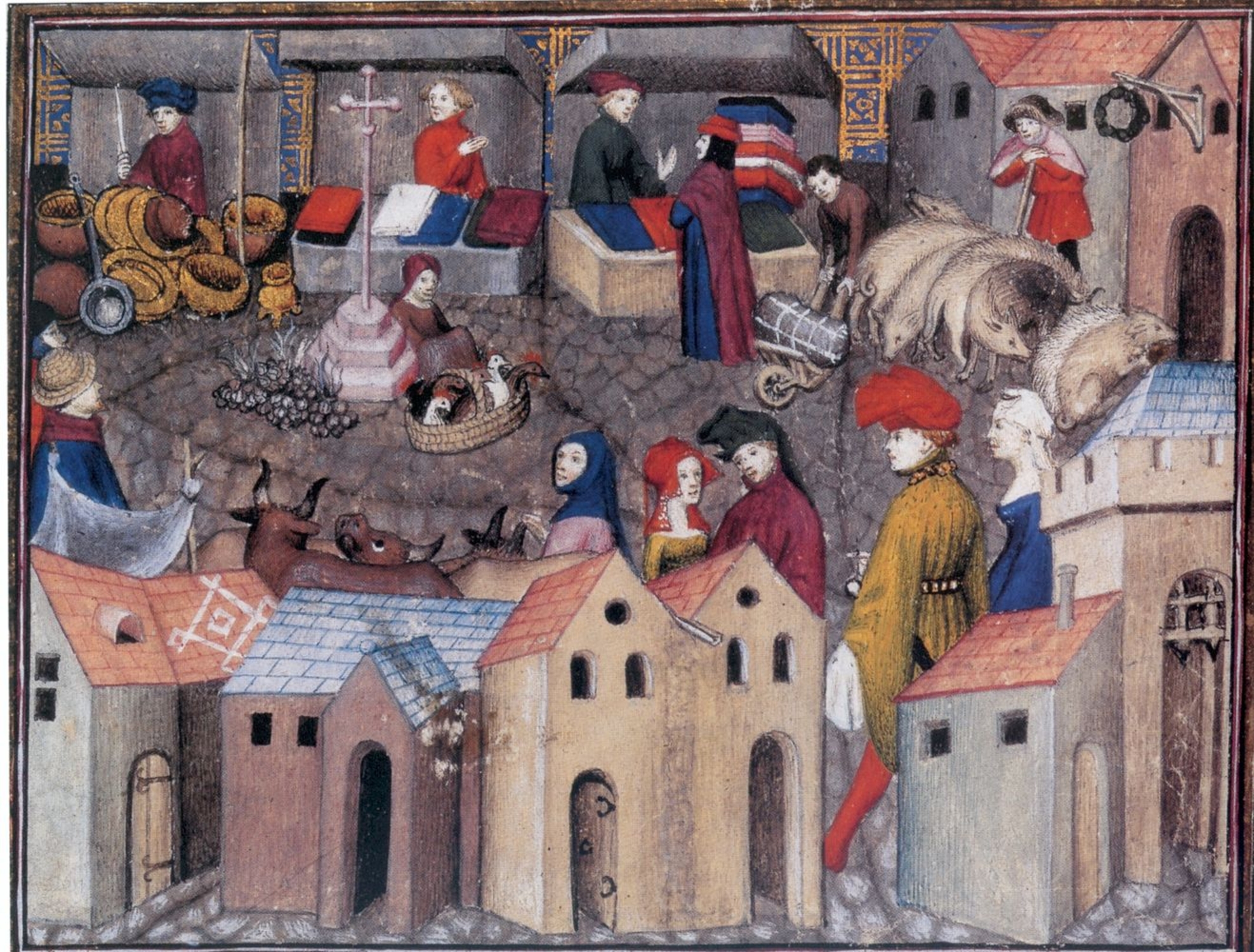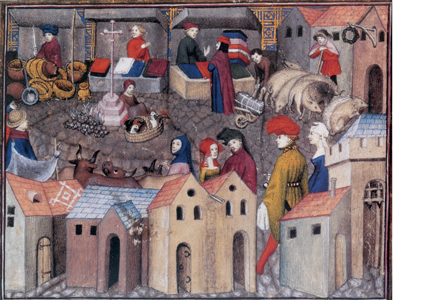- Home
- Crafts and daily life
- Saint-Denis's markets and fairs
Fair scene in "Le chevalier errant" by Thomas de Saluce, ca 1403 - 1404 (BNF, ms. fr 12559, f° 167).
© BNF.
The town's commercial activity during the medieval period can be seen in its markets and fairs.
Markets were held weekly, and met the everyday needs of the inhabitants. Everyone came to the market: town-dwellers, local peasants, artisans and itinerant merchants. Food and other goods were set out for sale at the Place Panetière (Panetière square), the Place aux Guèdes (Guèdes square) and in covered markets. They could also be sold in the street, on a "plank carried in front" and in houses.
Fairs were held once a year, drawing merchants who sometimes came from far away. They were timed to coincide with religious festivals and pilgrimages. Thus, the Saint Mathias fair started on February 24th, the saint's feast day, which commemorates the consecration of the Carolingian basilica1 in 775 in the presence of Charlemagne. The Lendit fair, which began on the second Wednesday in June, owed its start to the public display of relics of the Passion given to the abbey by Charles the Bald (843-877). Finally, the Saint Denis fair began on October 9, the anniversary of the patron saint. These fairs were held within the town or outside, depending on the size of the trade that took place.
Markets, and particularly fairs, were an important source of revenue for the lord abbot, who had his provost levy taxes, tolls and various duties on transport and the sale of goods. At the same time, the abbey ensured that the units of measure used by merchants were the same as those used in Saint-Denis.

